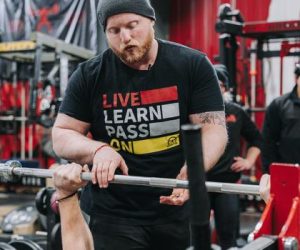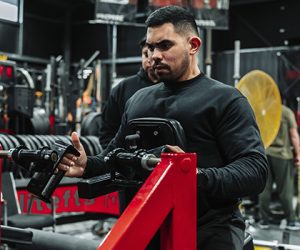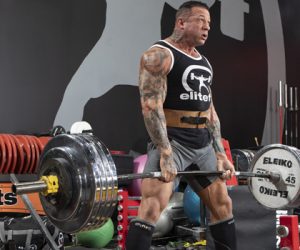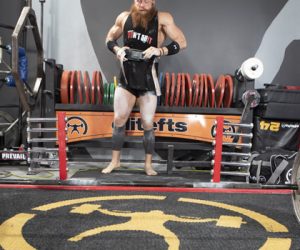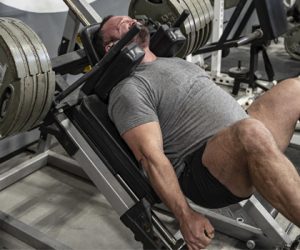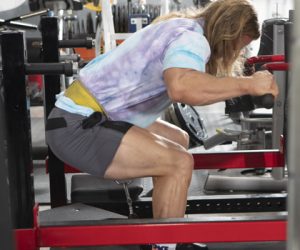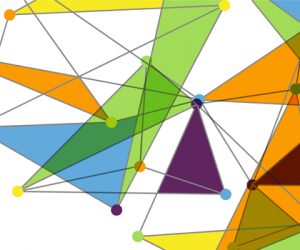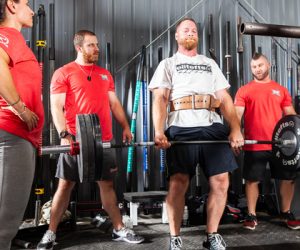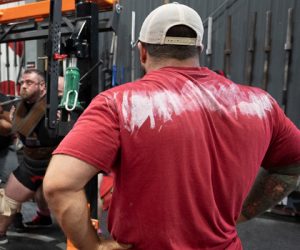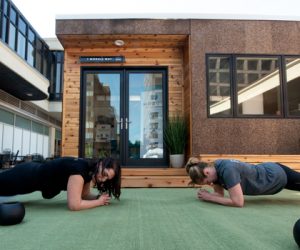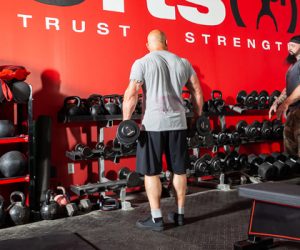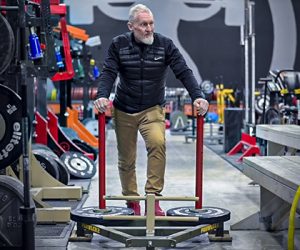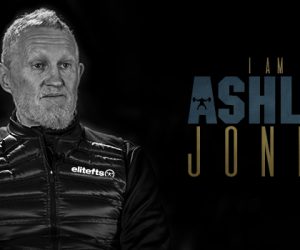What I Have Found Works Best
From Nautilus to the Conjugate system, Ashley explores time-tested training principles across strength, power, hypertrophy, endurance, and injury prevention—complete with examples, cycles, and formats you can implement right away.
A Fresh Look at French Contrast Method Variations
Design strength and power programs targeting both hypertrophy and metabolic goals. Includes comprehensive lower and upper body workouts, plyometrics, and a 3-week progressive cycle.
CARE Programming Versatility
Tailor the CARE Program for your athletes by using entree, main course, and dessert workout scenarios.
Off-Season Conjugate Training for Rugby
Ashley’s off-season program uses the conjugate system—focussing on neural, mechanical, and metabolic work. Plus, core accessory rehab exercises.
Simple Does NOT Mean Easy
Here’s the blueprint that’s simple, yet most don’t follow. It’s hard but it’ll yield great results for performance, strength, and size.
Programming Different Physical Qualities
I like to program from a metabolic, strength, or power focus. The three-day-a-week program allows more stimulation for each major area.
Training for Size and Strength
Here’s the simple plan with a four-day-a-week training split of upper and lower body. Each session has four exercises that’ll take an hour to complete.
Trialing a Rotating Weekly Plan
Here are my ideas for a rotating weekly plan that I’ve been trialing this month with my exact exercises and training loads. I’m sore!
Program Variation Based on Recovery Status
I like using the bell-shaped curve when considering where a player fits into a type of training session: reviving, surviving, or thriving.
In-Season Rugby Programming Utilizing the Westside Conjugate Methods
The key to the program is to never accommodate to movements and exercises. Change some aspects of your training every time you train.
The End of a Strength and Conditioning Career
What do you do when you wake up one morning and realize that your best years are behind you? Retirement is a double-edged sword.
The Eternal Triangle of Sports Weight Training
What is the eternal triangle shape of sports weight training? Considering speed, strength, and size, is it a scalene, isosceles, or equilateral?
Do We Deliver on Our Job Title?
For whatever reason, there’s a constant need to reframe what we do by a change in job title. Our job description has yet to change.
Programming for a Full Off-Season
Here’s a Major League Rugby (MLR) perspective on how to set up programming after the last game of the season.
The Devil is in the Detail for Gym Start-Ups
As strength and conditioning coaches, before you buy the gym equipment and create an exercise selection chart, answer these questions.
Time as a Factor in Weight Training
Unless you’re here to make friends, your workout should last no longer than sixty minutes. Strategize for strength and size gains!
The Six Pillars of Excellence
There are six pillars of excellence that every player and staff member should live by. It’ll breed character, culture, and success.
Off-Season Gym Programming
This article presents a few of my favorite programming variations to achieve the desired outcome this off-season.
The Combined Seasonal Training Chart
To expand upon the exercise selection chart discussion from last month, these training options form the basis of my decision-making and conversations with players as to what they need to focus on over the next four to six weeks in their gym sessions.
Programming Two-A-Days for Your Player's Pre-Season and In-season
Poliquin, Thibadeau, and Schoenfeld, among many other writers and researchers, have popularized this method—performing multiple training sessions within a day. Here’s how I set this up for my players within a three-day split program.
The Exercise Selection Chart
Let me walk you through a new weight room and share my processes for creating an exercise selection chart to best meet the needs of your athletes.
Integration of Great Ideas into a Manageable Training Program
Westside Barbell, 5/3/1, 5thSet, and Juggernaut Training Systems all play a role in the creation of this program. Let me know how you advance using it.
It's Better to Wear Out Than to Rust Out
In my fifties, I started to experience knee pain during and after Olympic lifts, squats, and deadlifts. After a career full of lifting and contact sports, my options were anti-inflammatory medication and gels, surgery, braces, ABI, and PRP. Here’s what helped me.
Pre-Season Planning
This is the first-week break-in program that I will put in place. I will also keep some players on this three-day-a-week programming based on needs-based discussions with the playing group upon their return and what other work-ons they have from a physical and skills perspective.
Specialty Bars and Sports Programming
Why do strength coaches persist in using the traditional bar now that there are many excellent alternative bars available?
The Integration of Unilateral and Bilateral Movements to Assist in Stren...
The program within is called One Big, One Small—there is one major movement, and a secondary movement supports this major movement. It can be used by anyone irrespective of sport or training goal to improve performance or get bigger and stronger.
Gym Programming Variation Across a Team
Here are several programs that were used during our last rugby season. Take special notice of the variety that you can achieve but also the range and breadth of programming in a team sport.
3x3 Performance Programming Matrix
I believe that the individualization of programming in team sports is the real holy grail of strength and conditioning. The application of the 3×3 programming matrix will ensure that each player will have the best opportunity to improve in the areas of dire need.
Relationships and Team Dynamics
I write this after fielding many questions during this COVID-19 lockdown period from young strength and conditioning coaches who have either lost their jobs or are at a crossroads of confidence. In some 30 years, I’ve had 17 strength and conditioning jobs…
Back-to-the-Gym Program to Optimize the Loading Process
As most of us come out of COVID-19 lockdown and back into the gym, here’s a program that can be used as a three- or a six-day-a-week program with emphasis on simplicity and variability.
Rugby Wants You!
Where do all of the football players go when they are unable to reach their playing goals in college or the National Football League?
Flow Chart to Assist in the Determination of Physical Training Content i...
Here’s the standard week-long plan with a seven-day turnaround between games, optimizing a balance between recovery both physiologically and psychologically.
Choosing 1 of 10 Programs to Individualize the Training Process
In designing programs for my players, I discuss with the player, the medical staff, and the coaching staff the areas they see as major ones to work on. All 10 programs are based on the emphasis given to each of the three key areas of weight room programming: neural, mechanical, and metabolic.
Pre-Season: Our Time to Shine
It is the one chance each year that sports practices do not take priority or leave players fatigued that they cannot give 100 percent to the physical development program.
Integration of Strength and Power Programming for the Lower Body in Spor...
Running sports are tangential in nature, so in order to optimize transfer from the weight room to the field, both vertical and horizontal movements need to be considered. To this end, the program I am going to outline will look at elements of training to ensure all bases are covered.
Progressions in Exercise Selection Based on Technical Proficiency
I firmly believe you have to start at the simplest movement that someone can master correctly, and then, over time, progress from that simple movement to the more complex movements. The process is one of progressive skill acquisition.
The elitefts Internship Guide
Everything you’ve ever wanted to know about internships, all in one place.
Build a Professional Rugby Team Through This Academy Program
I am currently working as a consultant for a pro rugby team, and I was asked about the type of player I would require moving into a pro team. Fair warning: What I wrote here may be considered heretical in the strength and conditioning world…
The Physical Requirements That Make a Rugby Player Great
In January 2017, Marc Keys and I embarked upon a labor of love to develop a questionnaire investigating what the various groups of people who make up the rugby industry think are the key elements of the physical preparation of the rugby player. Here are the results.
The Grand Unified Theory of Everything
A few years ago, I attempted to bring 4 strength sports together into a training plan for rugby. This time, I want to delve deeper into the framework that makes up the programming of these sports and how we can program them into a usable athletic development plan.
Rugby Top-5 Strength and Conditioning Equipment Picks
For Ashley Jones, being at the S5 Compound is like being a kid in a candy store, meaning he needs some moderation. Rather than use all of the equipment, Ashley shows off his top-5 pieces of equipment that should be in every strength and conditioning program for rugby.
Are You Ready for the Inevitable?
After resigning from my last position, I thought it was an opportune time to reflect on the situation and hopefully, a time for me to assist you in the process of finding your next gig. Best of luck in your job hunt!
Ocham’s Razor and the Pareto Principle in Weight Training Programming
According to the Pareto Principle, 80% of results come from 20% of your time. Ocham’s Razor states the simplest solution tends to be the best one. Simplicity is the missing ingredient in most training programs. Hence why I return to the famous paradigm of the pull-push-squat.
The Art of Programming for Injury Prevention/Risk Management
I believe the most important role of a strength and conditioning coach is to create programs that minimize the risk of injury. Armed with knowledge from a study on rugby injuries, I wrote a program that focuses on strengthening injury-prone areas. Here’s what I came up with.
WATCH: I am Ashley Jones
elitefts columnist Ashley Jones is Australian by birth, a New Zealander by choice and marriage, but first and foremost, he’s a strength and conditioning coach with 40 years of experience under his belt with plenty of passion and advice to spare to future coaches.
The ABCs of My Life in Strength, Conditioning, and Fitness
I started my career as a strength and conditioning coach nearly 40 years ago. Throughout those 40 or so years, I picked up and learned a lot from other people. I tried to name as many of these people and their ideas as possible, so here it is, in an easy-to-read ABCs format.
The Simplicity Project: Expanding to Two-A-Days for Strength and Size
The people have spoken, and I have answered. After receiving plenty of emails and comments about my last article, I decided to create and share a complete program based on The Simplicity Programming Project.
The Simplicity Project
By simplicity, I am referring to a minimalist approach to the programming of weight training by getting a maximum effect for the fewest number of exercises by utilizing a full body program performed three days a week. I want to challenge you all to give this a try for a period of no less than six weeks.
Minimal Effective Dose and the Search for Magic Bullets
To paraphrase Ronnie Coleman, “Everybody wanna be strong but nobody wanna lift heavy weights.” Ain’t that the truth. News flash: This is what you need.
The Six Pillars of Excellence
Since I am a strength and conditioning coach, I placed Hard Work first on the list, but in reality, they should all be given equal ranking.
Progressions in Exercise Selection Based on Technical Proficiency
I firmly believe you have to start at the simplest movement that you can master correctly and then over time progress from the simple to the more complex movements. Download my basic outline with notes included here.
Samoan Rugby Union Returns to CARE Program
The program I am currently running features the CARE program in a new format that I feel better allows the player to get a workout in without going too deep in the RPE continuum, especially if he or she is coming from a unit or a team session.
New Team, New Approach: Working the Curve with the Samoan Rugby Union
What I outline in this article is the third generation of this style of programming, taken through the furnace of professional rugby and modified accordingly to fit specific needs of the playing group I now work with.
Getting the New Job: Sharpen the Sword
Doing an extraordinary job in your present position does not guarantee you immunity to the inevitable changes that take place with funding cuts, administration changes, or coaches moving on. Are you prepared to find a new position?
Stronger Necks, Fewer Concussions
Neck training can be done with isometric or range of motion exercises, performed self-administered, working with a partner, or with equipment. I’ve recently begun to trial a new device to take this training even further.
The Qualities I Look for in a Strength and Conditioning Intern or Colleague
When I interview someone and consider letting them join my team, these are the things I consider.
Simple Training Has Stood the Test of Time
I want to introduce some new training ideas to accelerate you from good to great by revisiting the past and adding a twist to several favorites.
Game Changer: Rugby Programming Adjustments from the 40th NSCA National ...
Several incredible presentations from Paul Comfort, Mike McGuigan, and Bryan Mann led me me to make some key adjustments to the programming of my Metabolic Group.
Integrating Weight Training with Rugby Units Skill Training
This model sequences weight training and skills, with the weight training acting as a neural primer before moving to skill work and then bringing the players back to the weight room to complete the lower body session.









